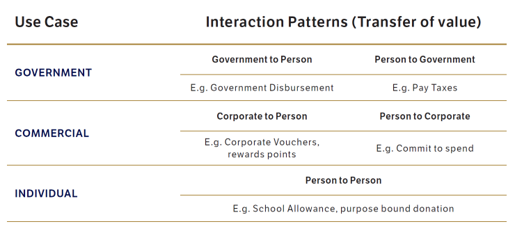This essay captures the essence of Project Orchid, highlighting its phases, objectives, and the caution advised regarding personal financial security. The project represents a significant step towards understanding and potentially implementing a digital currency in Singapore’s financial system.

Project Orchid Overview
Project Orchid is an exploratory initiative by the Monetary Authority of Singapore (MAS) focusing on the design and technical aspects of a digital Singapore dollar (SGD). The project is multi-year and multi-phase, aiming to advance Singapore’s financial infrastructure without an immediate need for a retail Central Bank Digital Currency (CBDC).
The primary objectives are to develop the necessary technology infrastructure and technical competencies for a digital Singapore dollar, including CBDCs and tokenised bank deposits, and to explore the potential use cases for programmable money in Singapore.

Phase 1: Purpose Bound Money (PBM)
The first phase investigates the potential use cases for a programmable digital SGD and the required infrastructure1. It introduces the concept of PBM, a protocol that specifies the conditions for using an underlying digital currency. PBMs are bearer instruments with self-contained programming logic, transferable without intermediaries.

The conclusion in the report of Project Orchid Phase 1 emphasizes the collaborative effort to explore the potential of a programmable digital SGD. It highlights the balance between leveraging emerging technologies and addressing current challenges. The project’s initial phase identified use cases for digital SGD, refined product features, and optimized user experience through trials. Future phases will expand stakeholder engagement and investigate additional capabilities, with the aim of developing a financial infrastructure that meets present and future needs.

Phase 2: Expansion and Blueprint
The second phase expands PBM usage in new scenarios, particularly in commercial applications within Singapore’s financial landscape. The Orchid Blueprint was published, detailing the development of core infrastructure components and insights from industry pilots and engagements. Additionally, MAS announced plans for wholesale CBDC issuance.

-
Programmable Rewards: This pilot explores the use of Purpose Bound Money (PBM) for creating customizable rewards systems. Companies can issue digital tokens with specific conditions that incentivize customer behavior and enhance loyalty programs.
-
eCommerce Escrow Arrangement: Aiming to increase trust in online transactions, this pilot tests an escrow service using PBMs. Funds are held securely and released only when predefined conditions are met, ensuring a fair exchange between buyers and sellers.
-
Supplier Financing: This initiative examines the application of PBMs in streamlining the supplier payment process. It enables more efficient, conditional payments that could improve cash flow and financial management for businesses.

-
Fungibility of Digital Money: The pilot investigates how PBMs can be interchanged with other forms of digital currencies, enhancing the flexibility and utility of digital assets in various financial contexts.
-
Institutional Payment Control: Focusing on corporate transactions, this pilot assesses how PBMs can provide organizations with greater control over payment conditions, improving compliance and financial governance.
-
Wallet Interoperability: This pilot tests the seamless transfer of PBMs between different digital wallets, aiming to foster a more interconnected and user-friendly digital financial ecosystem.

Conclusion
The conclusion from Project Orchid Phase 2 in the report from MAS emphasizes the need for proper governance and rulebooks to enable a safe and innovative digital ecosystem. It reflects on the insights gained from industry dialogues and live pilots, which explored the use of digital money in Singapore. The paper introduces the Orchid Blueprint for digital money adoption, developed with industry feedback, and outlines the design considerations for digital money-based services. MAS plans to refine open questions with the industry for mainstream digital money use in Singapore.
